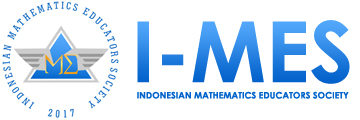Influence of Extrinsic and Intrinsic Motivation on Pupils Academic Performance in Mathematics
DOI:
https://doi.org/10.35706/sjme.v2i2.1322Abstract
The study investigated the influence of extrinsic and intrinsic motivation on pupils’ academic performance in mathematics. Based on the purpose of the study two hypotheses guided the study. The descriptive research design was adopted for the study. The population of the study consisted of all 3056 primary six pupils in Owerri Education zone of Imo State. A Sample size of 200 primary six pupils was selected for the study. Simple random sampling technique was used in selecting four schools out of the nine schools. The instruments used for data collection was Academic Motivation Scale and Mathematics Achievement Test. The validity was determined by two experts in measurement and evaluation and one expert in mathematics education. The instruments have reliability coefficient of 0.89 and 0.92 determined using tests-retest method. Data generated were analyzed with the aid SPSS version. Inferential statistics of t-test and Pearson product moment correlation were used to test the hypotheses at 0.05 level of significance. The study concludes that motivation improves academic performance of the pupils and there is a gender difference in motivation type and academic performance.
Downloads
References
Akpan, I. D. (2000). Single Parenting and Social Adjustment of Adolescent Students. University of Uyo Journal of Women Academics (UJOWACS). 1(1), 164–125.
Anderman, L. H. (1999). Classroom goal orientation, school belonging and social goals as predictors of students' positive and negative affect following the transition to middle school. Journal of Research and Development in Education, 32, 89-103.
Awan, R, Noureen, G., Naz, A. (2011). A Study of Relationship between Achievement Motivation, Self concept and Achievement in English and Mathematics at Secondary level. International Education Studies, 4(3), 72–78.
Ayub, N. (2010). Effect of intrinsic and extrinsic motivation on academic performance. In K. College of Business Management (Ed.), Pakistan Business Review. Retrieved March 1, 2011, from http://www.jobm.edu.pk/PBR/PBR1007363The%20Effect%20of%20Intrinsic%20and%20Extrinsic%Motivation%20revise.pdf
Bain, K. (2004). What the best college teachers do. Harvard University Press.
Bank, C. and Finlapson, W. (1980). Successful Motivation of Students in Academic Activities in McClelland, D.C. Appleton-Century-Crafts.
Benabou, R., & Tirole, J. (2003). Intrinsic and extrinsic motivation. Review of Economic Studies, 70, 489-520.
Biehler, R. F., & Snowman, J. (1990). Psychology applied to teaching (6th ed.). Boston: Houghton Mifflin.
Broussard, S. C. & Garrison, M.E. (2004). The relationship between classroom motivation and academic achievement in elementary school-aged children. Family Consumer Science Research Journal, 33(2), 106-120.
Cavallo, A. M. L., Rozman, M., Blinkenstaff, J., & Walker, N. (2003). Students’ learning approaches, reasoning abilities, motivational goals and epistemological beliefs in differing college science courses. Journal of College Science Teaching, 33, 18-23.
Chee, K.H., N.W. Pino, and W.L. Smith. 2005. Gender differences in the academic ethic and academic achievement. College Student Journal 39(3), 604-619.
Csiksezentmihalyi, M., & Nakamura, J. (1989). The dynamics of intrinsic motivation: A study of adolescents. In C. Ames, & R. Ames (Eds.), Research on motivation in education: Goals and cognitions (Vol. 3, pp. 45-72). San Diego: Academic Press.
Daniels, D.H., Kalkman, D.L. & Mc Combs, B.L. (2001) Young children’s perspectives on learning and teacher practices in different classroom contexts: implications for motivation, Early Education & Development, 12 (2), 253-273.
Deci, E. L., & Ryan, R. M. (1985). Intrinsic motivation and self-determination in human behavior. New York: Plenum.
Deci, E.L. (1975). Intrinsic motivation. New York: Plenum Press.
Deci, E.L., & Ryan, R.M. (1991). A motivational approach to self: Integration in personality. In R.A. Dienstbier (Ed.), Nebraska symposium on motivation: Perspectives on motivation (Vol. 38, pp. 237-288). Lincoln: University of Nebraska Press.
DeLong, M., & Winter, D. (2002). Strategies for motivating students. Learning to teach and teaching to learn mathematics: Resources for professional development (pp.159-168). Washington, D. C.: Mathematical Association of America.
Eccles, J., & Blumenfield, P. C. (1985). Classroom experiences and student’s gender: Are the differences and does it matter? In L.C. Wilkenson, & C. B. Marrett (Eds.), Gender influences in classroom interaction. Orlando, F. L.: Academic.
Elliott, A.J., & Dweck, C.S. (2005). Handbook of competence and motivation. New York: Guilford Press.
Feldman, R. S. (2005). Understanding Psychology 7th E. New York: McGraw Hill Higher Education.
Glynn, S. M., Taasoobshirazi, G., & Brickman, P. (2009). Science motivation questionnaire: Construct validation with no science majors. Journal of Research in Science Teaching, 46(2), 127-146.
Gottfried, A.W. (1985). Measures of socioeconomic status in child development research: Data and recommendations. Merrill-Palmer Quarterly, 31, 85-92.
Gottfried, A.W., Gottfried, A.E., Cook, C., & Morris, P. (2005). Educational characteristics of adolescents with gifted academic intrinsic motivation: A longitudinal study from school entry through early adulthood. Gifted Child Quarterly, 49, 172-186.
Greene, B. A., & DeBacker, T. K. (2004). Gender and orientations toward the future: Links to motivation. Educational Psychology Review, 16, 91-120.
Greenfield, T. A. (1998). Gender and grade level differences in science interest and participation. Science Education, 81(3), 259-276.
Harter, S. (1978). Effectance motivation reconsidered: Toward a developmental model. Human Development, 21, 34-64
Harter, S. (1981). A new self-report Scale of Intrinsic versus Extrinsic Orientation in the Classroom: Motivational and informational components. Developmental Psychology, 17, 300-312.
Husman, J., & Lens, W. (1999). The role of the future in student motivation. Educational Psychologist, 34(2), 113-125.
Johnson, J. O. (1996). Child Psychology. Wusen Press Limited. Calabar, Nigeria.
Lai, P. Y., Chan, K. W., & Wong, K. Y. (2006). A study of intrinsic motivation, achievement goals and study strategies of Hong Kong Chinese secondary students. Paper presented at The Annual Conference of the Australian Association for Research in Education, Adelaide, Australia.
Meece, J.L. & Holt, K. (1993). A pattern analysis of students’ achievement goals. Journal of Educational Psychology, 85, 582-590.
Morrell, P. D., & Lederman, N. G. (1998). Students’ attitudes toward school and classroom science: Are they independent? School Science and Mathematics, 98, 76-82.
Muola, J. M. (2010). A Study of the Relationship between Academic Achievement Motivation and Home Environment among Standard Eight Pupils. Educational Research and Reviews, 5(5), 213-217.
Pintrich, P. R. & Garcia, T. (1991). Student goal orientation and self-regulated learning in the college classroom. In M. L. Maehr & P. R. Pintrich (Eds.), Advances in motivation and achievement: Goals and self-regulatory processes (Vol. 7, pp. 371-402). Greenwich, CT:JAI press.
Rusillo, M. T. C., & Arias, P. F. C. (2004). Gender differences in academic motivation of secondary school children. Electronic Journal of Research in Educational Psychology and Psychopedagogy. Retrieved August 1, 2011, from http://www. investigacion-psicopedagogica.org/revista/articulos/3/english/art_3_31.pdf.
Ryan, R.M., & Deci, E.L. (2000). When rewards compete with nature: The understanding of intrinsic motivation and self reulation. pp. 14-54
Sandra, D. (2002).Mathematics and science achievement: effects of motivation, interest and academic engagement. Journal of Educational Research, 95(6), 323-332.
Schiefele, U. (1991). Interest, learning and motivation. Educational Psychologist, 26(3&4), 299-323.
Schiefele, U., Krapp, A., & Winteler, A. (1992). Interest as a predictor of academic achievement: A meta-analysis of research. The role of interest in learning and development (pp. 183-212). Hillsdale, NJ: Erlbaum.
Skaalvik, E. M., Skaalvik, S. (2006). Self-concept and self-efficacy in Mathematics: Relation with Mathematics motivation and achievement. Proceedings of the International Conference on Learning Sciences, Bloomington, Indiana.
Slavin, D. (2006). The Educational Psychology: Theory into Practice. Eaglewood Cliff, N. J.: Prentice Hall.
Stipek, D. J. (1988). Motivation to learn: From theory to practice (2nd ed.). Massachusetts: Allyn and Bacon.
Uguroglu, M. E., & Walberg, H.J. (1979), Motivation and achievement: A quantitative synthesis. American Educational Research Journal, 16, 375-389.
Vallerand, R.J., Pelletier, L.G., Blais, M.R, Briere, N.M., Senecal, C., & Vallieres, E.F. (1992). The academic motivation scale: a measure of intrinsic, extrinsic, and amotivation in education. Educational and Psychological Measurement, 52, 1003-1017.
Van Calster, K., Lens, W., & Nuttin, J. (1987). Affective attitude toward the personal future: Impact on motivation in high school boys. American Journal of Psychology, 100, 1-13.
Downloads
Published
How to Cite
Issue
Section
License
Authors who publish with this journal agree to the following terms:
- Authors retain copyright and grant the journal right of first publication with the work simultaneously licensed under a Creative Commons Attribution License that allows others to share the work with an acknowledgment of the work's authorship and initial publication in this journal.
- Authors are able to enter into separate, additional contractual arrangements for the non-exclusive distribution of the journal's published version of the work (e.g., post it to an institutional repository or publish it in a book), with an acknowledgment of its initial publication in this journal.
- Authors are permitted and encouraged to post their work online (e.g., in institutional repositories or on their website) prior to and during the submission process, as it can lead to productive exchanges, as well as earlier and greater citation of published work (See The Effect of Open Access).











